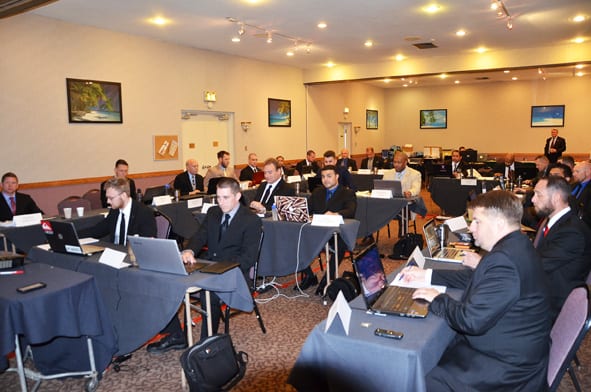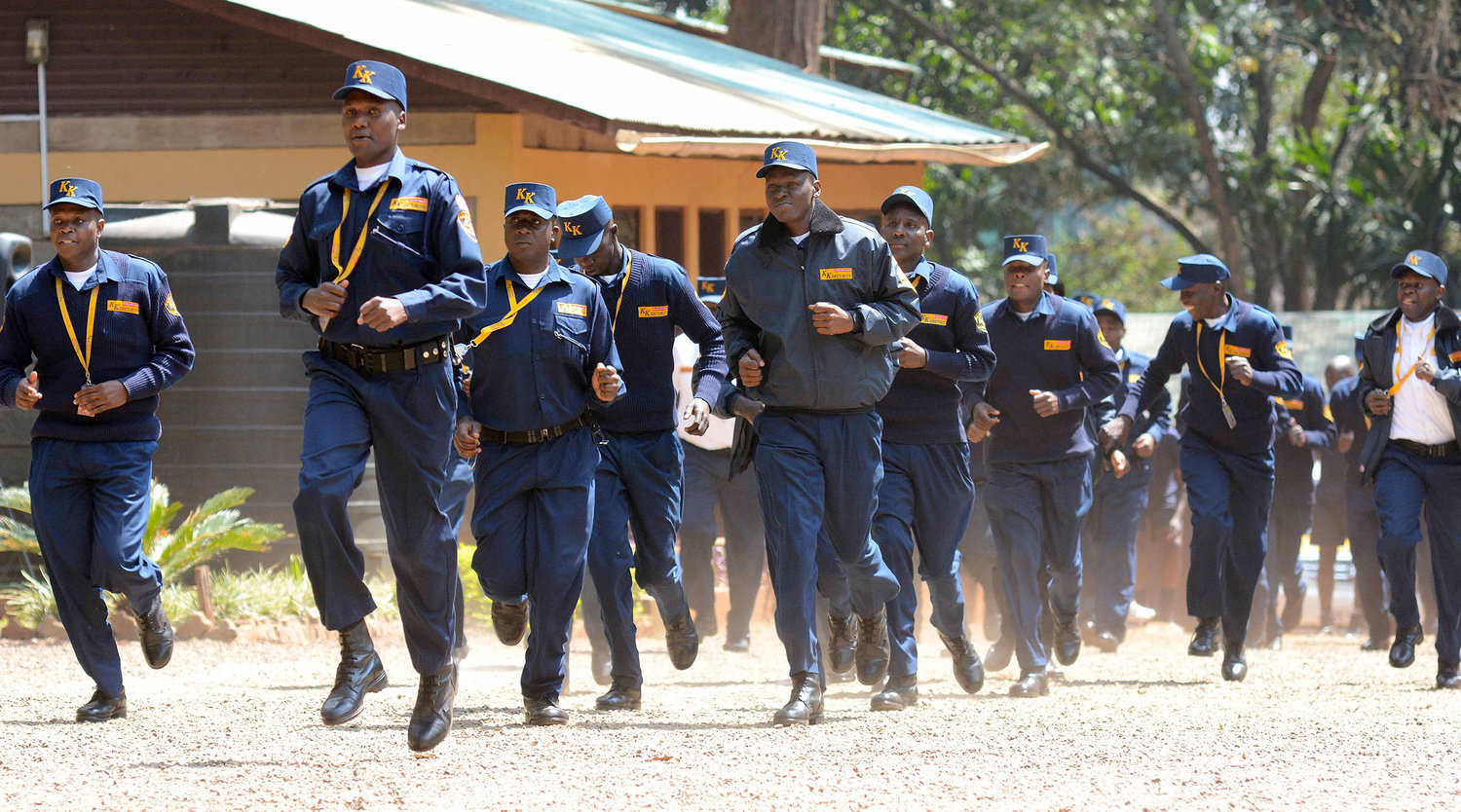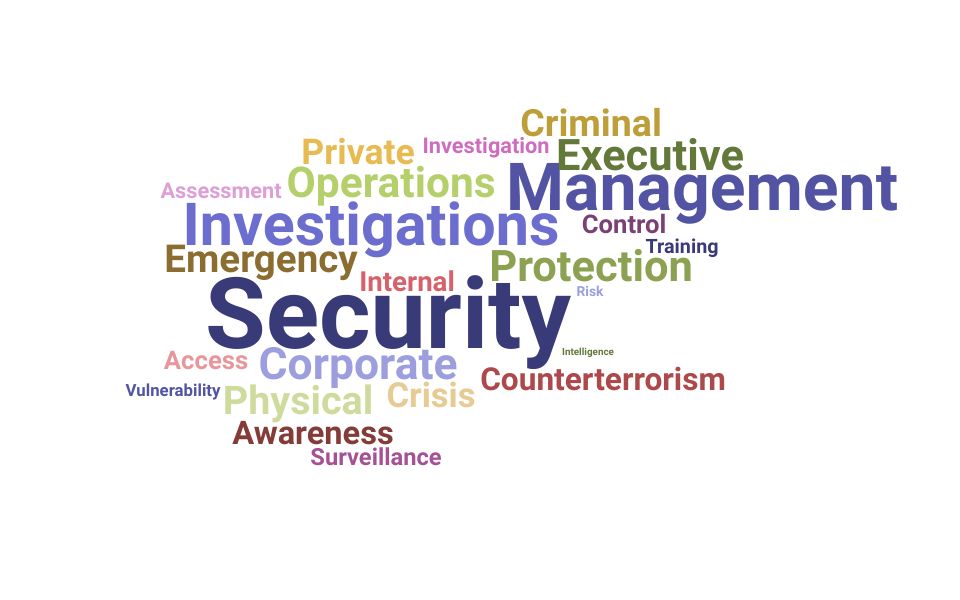A Blueprint for Corporate Security Excellence: Protecting Your Enterprise
Wiki Article
From Cybersecurity to Physical Actions: Enhancing Company Safety in an Altering Globe
In today's quickly developing electronic landscape, the value of corporate protection can not be overstated. As cyber threats end up being significantly sophisticated and widespread, organizations should exceed typical cybersecurity steps to guard their operations and possessions - corporate security. This is where the assimilation of physical safety and security measures ends up being important. By incorporating the strengths of both cybersecurity and physical protection, business can produce a comprehensive defense strategy that resolves the varied variety of threats they face. In this discussion, we will certainly discover the changing danger landscape, the need to integrate cybersecurity and physical safety, the execution of multi-factor verification steps, the relevance of worker understanding and training, and the adjustment of safety and security procedures for remote labor forces. By examining these crucial locations, we will certainly gain valuable insights right into exactly how companies can enhance their company safety and security in an ever-changing world.Recognizing the Altering Danger Landscape
The advancing nature of the modern world demands an extensive understanding of the transforming threat landscape for effective company safety. It is essential for organizations to remain educated and adapt their protection measures to deal with these progressing risks.One trick aspect of comprehending the altering threat landscape is acknowledging the various types of risks that organizations encounter. Cybercriminals are continuously creating brand-new strategies to exploit vulnerabilities in computer system systems and networks. These threats can range from malware and ransomware assaults to phishing frauds and social design strategies. Furthermore, physical risks such as theft, criminal damage, and corporate espionage continue to be prevalent issues for organizations.
Monitoring and assessing the hazard landscape is necessary in order to recognize prospective risks and susceptabilities. This involves staying upgraded on the current cybersecurity patterns, examining danger intelligence reports, and performing regular risk assessments. By recognizing the altering threat landscape, companies can proactively apply proper protection procedures to minimize dangers and protect their properties, track record, and stakeholders.
Integrating Cybersecurity and Physical Security
Incorporating cybersecurity and physical safety and security is essential for comprehensive corporate defense in today's electronic and interconnected landscape. As organizations progressively depend on modern technology and interconnected systems, the limits in between physical and cyber threats are ending up being obscured. To efficiently guard versus these dangers, a holistic strategy that combines both cybersecurity and physical security actions is necessary.Cybersecurity concentrates on safeguarding electronic possessions, such as systems, networks, and information, from unapproved gain access to, interruption, and theft. Physical protection, on the other hand, includes actions to protect physical properties, people, and facilities from susceptabilities and risks. By incorporating these two domains, companies can resolve vulnerabilities and dangers from both physical and electronic angles, thus boosting their total safety and security stance.
The integration of these two self-controls permits a more thorough understanding of security risks and allows a unified reaction to cases. For instance, physical access controls can be enhanced by incorporating them with cybersecurity methods, such as two-factor verification or biometric recognition. Similarly, cybersecurity actions can be enhanced by physical security measures, such as monitoring cameras, alarm systems, and safe and secure accessibility factors.

Carrying Out Multi-Factor Verification Steps
As companies significantly prioritize thorough safety and security procedures, one effective method is the execution of multi-factor authentication actions. Multi-factor authentication (MFA) is a protection approach that requires individuals to supply numerous forms of recognition to access a system or application. This method includes an additional layer of defense by integrating something the individual understands, such as a password, with something they have, like a fingerprint or a security token.By implementing MFA, organizations can considerably enhance their protection pose - corporate security. Typical password-based verification has its constraints, as passwords can be conveniently endangered or forgotten. MFA mitigates these threats by adding an additional authentication variable, making it much more difficult for unapproved people to get to delicate information
There are a number of sorts of multi-factor authentication techniques offered, consisting of biometric verification, SMS-based verification codes, and hardware tokens. Organizations require to examine their details needs and pick the most proper MFA solution for their requirements.
Nonetheless, the execution of MFA should be thoroughly planned and performed. It is essential to strike an equilibrium between protection and functionality to avoid customer irritation and resistance. Organizations ought to likewise take into consideration prospective compatibility concerns and give adequate training and support to ensure a smooth shift.
Enhancing Employee Understanding and Training
To reinforce corporate safety, companies should prioritize improving employee understanding and training. In today's rapidly advancing hazard landscape, staff members play a crucial function in safeguarding a company's sensitive information and assets. Numerous safety breaches occur due to human mistake or absence of understanding. Organizations need to spend in thorough training programs to inform their employees regarding potential threats and the best methods for mitigating them.Efficient worker awareness and training programs ought to cover a broad range of subjects, including data security, phishing assaults, social engineering, password hygiene, and physical protection steps. These programs should be tailored to the certain requirements and responsibilities of different staff member roles within the company. Normal training simulations, sessions, look what i found and workshops can assist workers develop the essential skills and knowledge to react and determine to safety and security risks effectively.
Moreover, organizations should encourage a culture of protection awareness and give ongoing updates and pointers to keep workers educated regarding the current hazards and mitigation strategies. This can be done via inner communication channels, such as e-newsletters, intranet sites, and e-mail projects. By cultivating a security-conscious labor force, organizations can dramatically decrease the probability of security occurrences and secure their useful possessions from unapproved gain access to or compromise.

Adapting Safety Procedures for Remote Labor Force
Adjusting business security steps to accommodate a remote workforce is necessary in making sure the security of delicate information and properties (corporate security). With the increasing fad of remote job, companies have to execute proper protection measures to mitigate the dangers associated with this new means of workingOne important aspect of adapting safety actions for remote job is developing secure interaction networks. Encrypted messaging platforms and online private networks (VPNs) can aid safeguard delicate details and protect against unapproved gain access to. In addition, organizations should implement making use of solid passwords and multi-factor authentication to enhance the protection of remote access.
An additional important factor to consider is the execution of secure remote accessibility services. This includes offering staff members with safe accessibility to company resources and data through online desktop computer infrastructure (VDI), remote desktop methods (RDP), or cloud-based solutions. These technologies ensure that delicate information remains safeguarded while allowing staff members to do their duties efficiently.

Lastly, detailed safety and security understanding training is essential for remote staff members. Educating sessions must cover best techniques for firmly accessing and handling sensitive information, recognizing and reporting phishing attempts, and maintaining the overall cybersecurity hygiene.
Conclusion
To conclude, as the threat landscape continues to develop, it is crucial for organizations to strengthen their safety measures both in the cyber and physical domains. Incorporating cybersecurity and physical safety, implementing multi-factor authentication actions, and enhancing staff member awareness and training are necessary actions towards accomplishing durable company protection. Additionally, adjusting protection procedures to fit remote workforces is essential in today's transforming world. By implementing these actions, companies can reduce risks and protect their beneficial possessions from prospective risks.In this conversation, we will certainly discover the changing danger landscape, the need to incorporate cybersecurity and physical safety and security, the execution of multi-factor authentication steps, the importance of worker awareness and training, and the adjustment of safety procedures for remote workforces. Cybersecurity measures can be enhanced by physical security procedures, such as security video cameras, alarm systems, and secure access points.
As companies increasingly prioritize extensive security steps, one reliable approach is the implementation of multi-factor verification steps.In verdict, as the hazard landscape continues to develop, it is critical for organizations to reinforce their protection measures find this both in the cyber and physical domains. Integrating cybersecurity and physical safety, applying multi-factor authentication steps, and improving staff member recognition and training are important steps towards achieving durable business security.
Report this wiki page